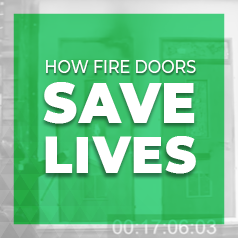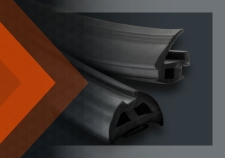
In Duffells ‘Escape & Fire Door Safety’ promotion this month we have featured Fire Brigade mortice locks, padlocks and Fire Brigade keys. These products serve a critical role by allowing fire services and other emergency personnel to access locations that are restricted for the general public and prevent unauthorised entry.
Each Fire Brigade mortice lock or padlock has a corresponding Fire Brigade Key that opens these locks wherever they are installed across the country. These locks allow the fire services and emergency personnel quick access to key areas and help improve response times to emergency call outs. The areas often contain essential emergency equipment that can be crucial when tackling a fire.

Earlier in the year, the Office of National Statistics (ONS) released the annual report for fire-related incident statistic for England in the year 2018. We wanted to share these findings with you all to give a better understanding to the volume of incidents and the importance of fire safety in our industry.
The following was sourced from the Home offices online Incident Recording System (IRS) and include statistics on fire-related incidents, fire fatalities and fires attended.
NUMBER OF INCIDENTS
For the year 2018, Fire and Rescue Services (FRS) in England attended 576,586 incidents; a 2% increase on the previous year. These incidents are categorised into fires, fire false alarms and non-fire related incidents.
177,844 of the incidents recorded were actual fires; a 5 percent increase on last year.

“The number of incidents attended by FRSs in England peaked in 2003/04, at over one million incidents. For around a decade, there was a general decline in all three categories of incidents attended and between 2012/13 and 2015/16 there were around half a million a year. Since 2015/16 this number has risen to around 577,000 incidents in the year ending December 2018.
In contrast to the earlier decreases (caused by a reduction in fire and fire false alarm incidents), the increase in total incidents between 2014/15 and the year ending December 2018 has been predominantly driven by a 34 per cent increase in non-fire incidents over this time. This was mainly due to an increase in FRSs attending medical co-responding incidents. However, from September 2017 these incidents started to show a decrease.” – Home Office Statistical Bulletin 06/19.
FIRE RELATED FATALITIES
In 2018 there were 261 fire-related fatalities compared with 338 from the previous year (2017 was the year of the Grenfell fire catastrophe). For the purposes of the graph below, we have categorised the types of fatalities into dwellings, other fires and Grenfell Tower Fire.

FIRES ATTENDED
Fires incidents are categorised into 2 categories; ‘Primary fires’ and ‘Secondary fires’.
Primary fires are fires that either occurred in a non-derelict building, vehicle, outdoor structure, involved a fatality / casualty / rescue, or were attended by 5 or more pumping appliances.
Primary fires increased by 2% on the previous year.
In 2018, 41% of the 177,844 fires attended were primary fires (73,260). A 2% increase on the previous year.
Out of these primary fires, there were 29,956 primary dwelling fires 3 quarters of which were in bungalows, houses, converted flats and other properties. A quarter we in purpose-built flats.
Secondary fires are fires that do not involve people or property and are generally small outdoor fires.
Secondary fires increased by 11% on the previous year.
In 2018 59% of the 177,844 fires attended were secondary fires (83,080). An 11% increase on the previous year.
The increase in secondary fires has partly been attributed to the hotter and drier weather experience between April and September in comparison to previous years.
You can see the full report from the Office of National Statistics by clicking here.
Fire Door Safety Week is running from September 23rd to September 29th, we’ve pledged our support and you can too by clicking here and sharing the content on your social feeds to spread the word about the importance of best practise when installing fire door security.

 |
 |
Tell us, have you noticed an increase in demand for fire-rated security from your customers?





